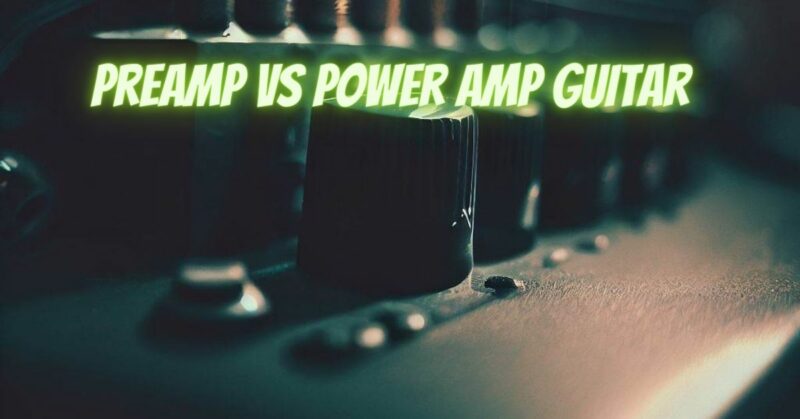In the world of guitar amplification, understanding the roles and differences between a preamp and a power amp is essential for achieving the desired tone and sound. Both components play crucial parts in shaping and amplifying the guitar signal, but they serve distinct purposes. In this article, we will explore the differences between a preamp and a power amp in the context of guitar amplification, helping you gain insights into their functions and how they contribute to your overall sound.
Preamp:
The preamp, short for preamplifier, is the initial stage in the amplification chain of a guitar signal. It processes the raw guitar signal from the instrument’s pickups and prepares it for amplification. The preamp’s primary functions include signal amplification, tonal shaping, and providing various controls such as gain, volume, tone controls (e.g., EQ), and sometimes built-in effects. The preamp is responsible for adding color, character, and distortion to the guitar signal.
Power Amp:
The power amp, also known as the power amplifier, is the second stage in the amplification chain. Its main role is to amplify the preamplified signal to a level that can drive speakers or a guitar cabinet. The power amp takes the signal from the preamp and increases its power, allowing it to be projected through speakers. The power amp’s characteristics, such as its wattage and design, significantly influence the overall volume, dynamics, and response of the guitar tone.
Key Differences and Considerations:
- Signal Processing: The preamp focuses on shaping the tone and adding desired effects to the guitar signal, while the power amp’s primary task is to amplify the signal to a level suitable for driving speakers.
- Controls and Tone Shaping: Preamps typically offer a wide range of controls, including gain, EQ, and various effects, allowing you to sculpt your guitar’s tone. Power amps, on the other hand, usually have minimal controls, often limited to volume or master volume, as their main purpose is amplification rather than tone shaping.
- Flexibility: Preamps provide a higher degree of flexibility and versatility since they offer a wide range of tone-shaping options and the ability to connect to different power amp setups. They can be used with different power amp configurations or even in direct recording setups, making them suitable for various applications and musical styles.
- Integration: Some guitar amplifiers combine the preamp and power amp into a single unit, commonly referred to as combo amps. These integrated amplifiers provide convenience and portability, making them popular among gigging musicians. However, standalone preamps and power amps offer the advantage of customization and the ability to mix and match components based on personal preferences.
Conclusion:
In the world of guitar amplification, both preamps and power amps play vital roles in shaping and amplifying the guitar signal. The preamp focuses on tonal shaping, adding color, and providing controls for gain, EQ, and effects. The power amp, on the other hand, is responsible for amplifying the preamplified signal to a level suitable for driving speakers or guitar cabinets. Understanding the distinctions between these components will help you make informed decisions about your gear setup, whether you choose an integrated amplifier, separate preamp and power amp combination, or a preamp pedal into a power amp setup. Ultimately, finding the right balance between preamp and power amp characteristics will contribute to achieving the desired guitar tone and sound for your playing style and musical preferences.


